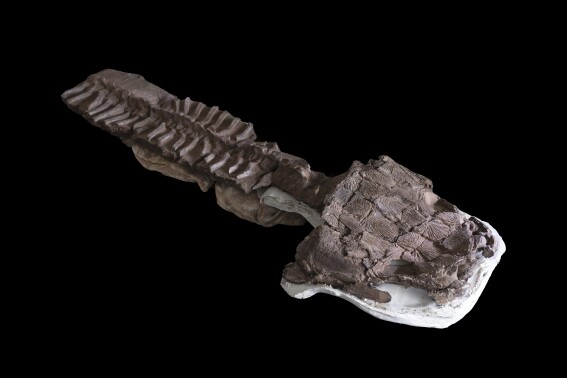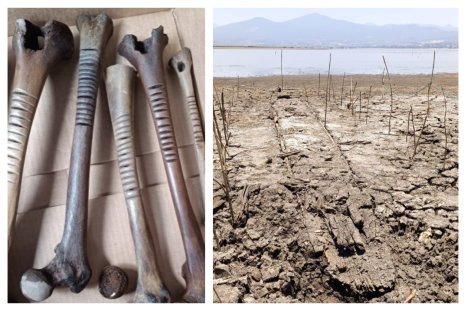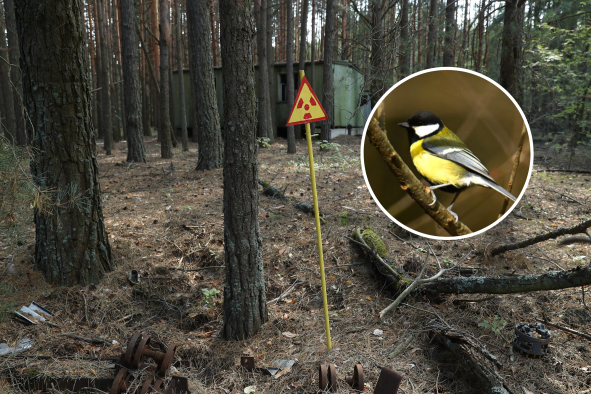A prehistoric painting in Indonesia has been dated to at least 51,200 years ago, making it the earliest known example of "figurative" cave art in the world and perhaps the oldest known surviving example of a narrative scene, a team of researchers has proposed in a study.
Figurative artworks are those that are not abstract designs and clearly depict real things, such as animals, humans (or their body parts) and other objects.
According to a study published in the journal Nature, not only is the painting the earliest documented figurative art, it is also possibly the oldest known surviving example of "visual storytelling"—or a narrative scene—in the world.
The newly described painting is located in the limestone cave of Leang Karampuang in the Maros-Pangkep region of Sulawesi, an Indonesian island.
Narrative cave art "shows that the painter(s) is/are conveying more information about images than just individual static images—they are telling us how to look at them in association," Maxime Aubert, an author of the study with Griffith University in Australia, told Newsweek. "We, as humans, define ourselves as a species that tells stories, and these are the oldest evidence of us doing that."
But one independent expert who was not involved in the research—Wil Roebroeks, a professor of paleolithic archaeology from Leiden University in the Netherlands—told Newsweek that while the dating work in the study was "solid," the "narrative" interpretation of the art is open to debate.
Previous dating research has indicated that Sulawesi is home to some of the oldest known rock art in the world. That work was based on a technique known as uranium-series dating (U-series), which researchers used to analyze deposits of the mineral calcite (a form of calcium carbonate) overlying the art in the limestone caves of the Maros-Pangkep region.
In the latest study, Aubert and colleagues used a novel application of this approach that they developed—called laser-ablation U-series imaging (LA-U-series)—to re-date some of the earliest cave art in the area and determine the age of stylistically similar works at other sites in the region.
"We have previously used the uranium-series method to date very old rock art in two parts of Indonesia—Sulawesi and Borneo—but our new LA-U-series technique is more accurate, allowing us to date the earliest calcium carbonate layers formed on the art and get closer to the point in time the art was created. It will revolutionize rock art dating," Aubert said in a press release.
It is typically challenging to date prehistoric rock art in an accurate and reliable manner, but Aubert told Newsweek the LA-U series approach was a "huge improvement" over the U-series analysis in terms of accuracy and efficiency.
"It also requires much smaller samples, considerably reducing the physical aspect of sampling precious rock art," he said.
Using the novel LA-U approach, the researchers dated the painting at Leang Karampuang, which depicts a wild pig and what the authors interpret as three human-like figures interacting with it. The method yielded a minimum age of 51,200 years ago, pushing back previous dates for paintings on the island by at least 5,700 years.
The previous earliest example of figurative rock art in the world was a painting of a pig on Sulawesi—at the Leang Tedongnge site in Maros-Pangkep—dated to a minimum of around 45,500 years ago, according to Aubert.
In the latest study, the authors also analyzed a painting of a hunting scene at the Leang Bulu' Sipong 4 site in Maros-Pangkep, which had previously been dated to at least 43,900 years ago using the U-series approach. This painting was already considered to be one of the oldest examples of figurative rock art in the word, and one of the oldest narrative scenes.
Using the novel technique, the team found that this painting was older than previously thought—likely dating to around 48,000 years ago.
According to the study authors, the latest findings indicate that figurative portrayals of anthropomorphic figures and animals have an earlier origin in human history than previously thought.
Do you have a tip on a science story that Newsweek should be covering? Do you have a question about archaeology? Let us know via science@newsweek.com.
Disclaimer: The copyright of this article belongs to the original author. Reposting this article is solely for the purpose of information dissemination and does not constitute any investment advice. If there is any infringement, please contact us immediately. We will make corrections or deletions as necessary. Thank you.




